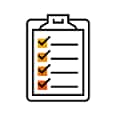Control Company Costs
Why Paper Invoices Will Always Lack Old-School Charm
A decade ago, many finance teams would struggle to answer the question: what is invoicing automation? But today, it’s an everyday reality for agile organisations. For them, the world of paper invoices and manual processing has been consigned to history – for good. So what happened, so fast? Let’s take a look.
Automation and the Future of Work
Every so often, old-school fashions make a comeback. It could be cargo pants, platform shoes, comfort food recipes, or the 80s vibes of a hit TV series like Stranger Things.
But it’s doubtful that yesterday’s office fixtures will come full circle. We won’t be seeing hefty personal organisers cluttering boardroom tables or hearing the constant screech of fax machines anytime soon.
For many businesses, the fading out of paper invoices have been a welcome relief too, alongside time-consuming manual processing and spreadsheet management. Technology development, the online invoice, and future automation have been embraced widely.
But why the big change? What are the advantages of automating your invoice process?
Let’s look at the key questions that have sparked a shift among finance teams over the past decade.
1) Does Automated Invoice Processing Save Time and Money?
Yes. This is the most obvious benefit for forward-thinking finance teams today – compared to a decade ago. Now there’s no constant rekeying, energy-sapping manual processes or human errors creeping in constantly. Put simply, OCR and machine learning does much of the heavy lifting for you, while approvers can authorise payments on-the-go from mobile apps.
The outcome? Companies can typically cut invoice processing time by 75% when they go paperless and accurately capture invoice data through AI. That can translate into £38,000 per year average savings made by UK companies when they use the best invoicing software.
2) Can Invoicing Software Handle All Formats and Is the Technology Scalable?
Some start-ups and smaller businesses still paddle along with the manual invoice processing of yesteryear. But this becomes increasingly harder to manage when you grow as a company and more invoices arrive in a variety of formats.
Many finance teams have discovered that modern invoicing software gives them breadth and depth. They can flex as their business becomes more complex and even if they deal with hundreds of suppliers. Being able to capture paper and online invoices automatically can lift the load off your team. And with cloud technology, you can scale up as your business grows.
3) Can the Latest Invoicing Software Help to Prevent Costly Mistakes?
Yes. The clunky systems and manual processing of the past were prone to errors that snuck onto invoices or were created during rekeying. Invoices could also get mislaid, forgotten or duplicated, especially if there was a lapse in spreadsheet version control.
However, one of the top benefits of Accounts Payable (AP) automation is the ability to spot inaccurate and duplicate invoices upfront. The system has your back, matching invoices and purchase orders for you and preventing a host of potential problems. For example, in a 12-month period, Concur® Invoice identified and stopped £6 million worth of duplicate invoices being paid by UK clients.
4) Can Invoice Technology Create Better Supplier Relationships?
The manual systems of a decade ago could create stress for suppliers and sour any future negotiations. Suppliers loathed wasting time by having to chase AP teams about late payments.
But today’s automated systems with faster payments, few hold-ups, and instant notifications have helped to build positive supplier relationships. In turn, this can lead to long-term benefits, such as added discounts and preferential client status. Companies can also reduce the chance of being penalised for late payments.
5) Can Invoicing Software Give You Greater Visibility and Control of Spend?
This is another big win for today’s finance teams. A decade ago, visibility into cash flow could be hazy, as invoices were slow to appear on the system. But today’s systems mean invoices are accurately captured at source and instantly available online. The best systems will also connect with NetSuite, QuickBooks, Sage, Xero, SAP, and many more solutions.
This means finance teams and their colleagues across the business get a far clearer view of spend at any moment in time. You can budget more accurately and
analyse the data to make better-informed decisions. There’s also a full online invoice trail for auditing purposes.
What About the Future?
Although plenty of finance teams have already unlocked the benefits of today’s invoicing software, many are still trying to shake off habits from the past – according to 2022 data from SAP Concur and Oxford Economics
When it comes to collecting, processing, and paying vendor invoices, only 33% of executives say the overall process is completely optimised, and 34% consider themselves to be effective at the task, says the report Empowering your people: How executives can jump-start the flexible workplace.
Fortunately, the remaining two-thirds can catch up through future automation and invoice technology that brings them closer to the paperless office. Proven cloud-based systems can be deployed without a fuss – and intuitive apps can get your team up and running at speed and scale.
Download Your Guide to Financial Automation: 5 Steps Toward Digital Transformation for practical tips, helpful questions to ask, and the next steps to keep you moving on your digital journey.

